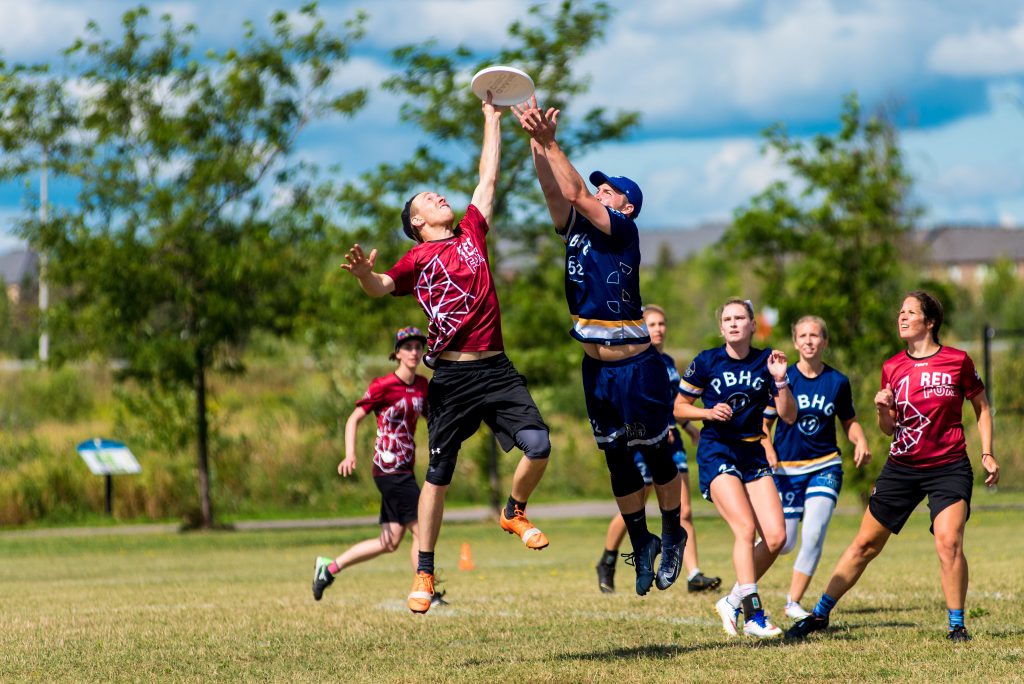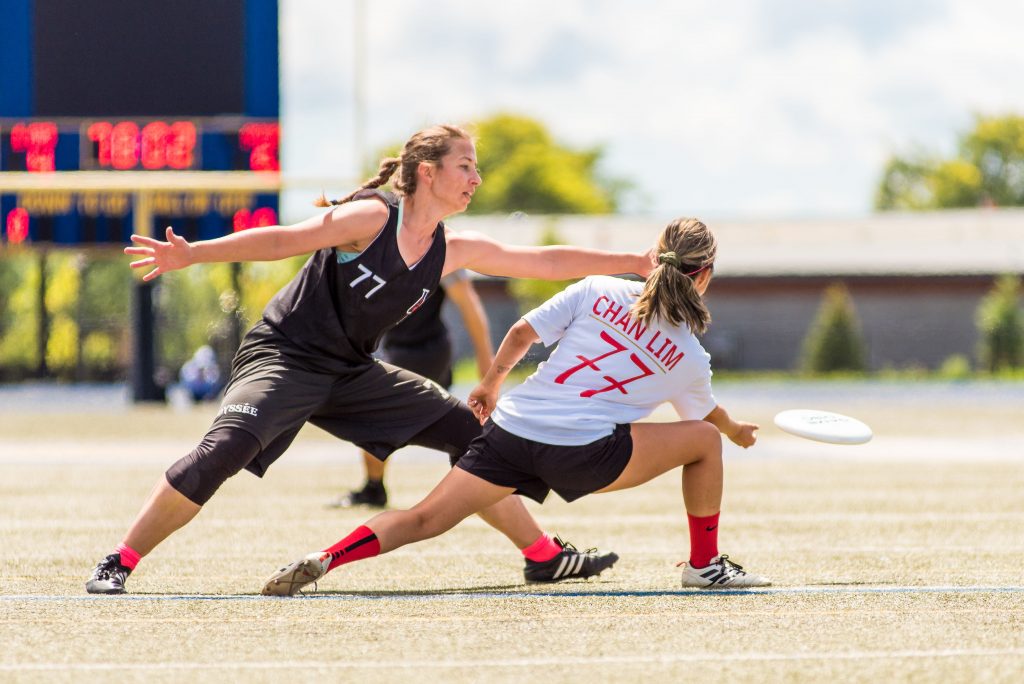
Ultimate’s popularity is growing. Its value on fun, inclusiveness and fair play (ultimate is self-refereed and non-contact) can quickly turn newcomers into true believers. Yet, as a relatively new sport, ultimate also has some pretty basic challenges—such as recognition.
By Connie Jeske Crane
CHALLENGES
“Usually once I add [the word] ‘Frisbee’ people know what I’m talking about,” laughs Teri-Lynne Belanger, Ultimate Canada’s event manager, but she admits, “we do spend a lot of our time explaining what ultimate is and how it’s played, and that it is has nothing to do with dogs!”
Being a young, member-funded sport poses other limitations. “We do not have Sport Canada funding,” Belanger adds, noting Ultimate Canada has applied for and met requirements but was told there’s no funding available. For national championships, “We get some funding from sponsors, but they tend to be very ultimate-specific sponsors.” (This year’s primary sponsor is VC Ultimate, a Toronto-based ultimate apparel, uniform and gear company.)
GROWTH
While interest and point of entry used to centre on university students, Belanger says that’s changed: “I would say the biggest growth we’re seeing is in the U18 bracket, 13 to 18.”
With growth, the national championships split to two sites. “It is our No. 1 priority that there are no satellite sites… So the larger the event got, the harder it became to find cities that had fields all in one location.”
This past August, championships took place in Brampton, Ont., and in Edmonton. Having sites in the east and west, she says, has made competition more accessible to Canadians.
Next on the wish list? Ultimate Canada hopes to create an international event by 2024, “some sort of Canada Cup,” Belanger says, to support its national team before the World Games.
Did you know…
Ultimate Frisbee was rebranded as ultimate because the word “Frisbee” is trademarked by the Wham-O toy company.
LEGACY and SOCIAL ROI
Played on soccer fields (two ultimate games per one soccer pitch), Belanger says tournaments don’t require or leave behind sparkly new infrastructure. Rather, ultimate’s legacy for hosts involves thoughtfully integrated elements in line with local needs.
In 2019, for example, Belanger says Edmonton’s event supported Ultimate Peace, a non-profit allowing youth in the Middle East to build friendships while playing ultimate. In Brampton, where ultimate isn’t as strong, Ultimate Canada invested to bring coaching to some local summer sport camps to “grow an ultimate community in Brampton.”

ADVICE
It’s crucial for organizers and local tourism boards to understand each other’s aims and work together, says Belanger. “I think that partnership is most important and it’s probably the single biggest indicator of whether an event will be successful.”
As for communities investing in infrastructure, she says making fields as diverse as possible—adding removable posts, placing garbage cans away from playing fields—can ramp up multi-purpose appeal. “Let’s not just make this all soccer…or rugby… It just opens up so many doors for sports like us to be able to come in and bring an event to your community.”
EDMONTON
Adult Single-gender Divisions (Women’s and Open); Junior Divisions (U18)
August 11–18, 2019
Venue: Ivor Dent Sports Park
20-28 ultimate fields: (10-14 grass soccer fields)
Athletes: 2,300
Attendees: 1,998
Volunteers: 130
Total Economic Impact: $2.6 million
BRAMPTON
Adult Mixed and Mixed Masters Divisions
August 22–25, 2019
Venues: Creditview/Sandalwood Sports Fields; Terry Fox Stadium
10–16 ultimate fields (5–8 grass soccer fields)
Athletes: 700
Attendees: 742
Volunteers: 70
Total Economic Impact: $2.1 million
2020 CANADIAN ULTIMATE CHAMPIONSHIPS
Junior, Open and Women Divisions
Brampton, Ont.
August 9–16, 2020
Mixed Divisions
Laval, Que.
August 20–23, 2020



